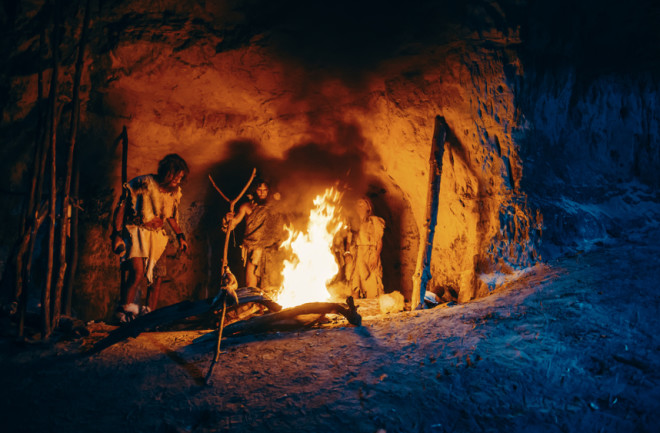Paleoanthropologist Briana Pobiner wasn't expecting an ancient revelation during a routine examination of a Paleolithic shin bone in 2017. She observed clean, carved cuts on a human tibia that mirrored processed animal food remains, hinting that a human may have butchered and consumed the bone. And this wasn't a one-off find.
Across the English Channel, evidence from the Magdalenian culture echoed Pobiner's find. Here, a staggering 42 percent of prehistoric human bones bore human teeth marks with tools to separate flesh from bones – clear signs that our ancestors, stretching back 1.45 million years ago, engaged in cannibalism.
Initially, this act of "people-eating" may have been a brutal necessity. The harsh realities of the Ice Age – scarce food, rising population and the limitations of hunter-gatherer life drove tribes to eat each other for sheer survival. However, as societies evolved, so did the motivations behind cannibalism.
Cannibalism Is Common in Nature
But before you imagine a horror movie trope – cannibalism isn’t exactly taboo in the natural world. James Cole from the University of Brighton was one of the first paleo archaeologists to provide evidence of cannibalism that goes beyond nutrition and calories and says "it's actually pretty common. In fact, over 1500 different species, including primates eat each other.”
Rodents may eat some of their young if they're sick, dead, or too numerous to feed while chimpanzees sometimes cannibalize infants to get some extra protein.
For human evolution, ancient civilizations had their fair share of “man eater” stories. In China, as early as 200 B.C., criminals were reportedly sold for consumption, and throughout time, people have fallen prey to cannibal tribes.
Anthropologist Francis Edgar Williams documented the Orokaiva tribe in Papa New Guinea who raided others, decapitated them, and selectively ate body parts like eyeballs and cheeks as a symbol of victory and a gruesome display of dominance meant to intimidate rivals.
Read More: Cannibals in Nature Are More Common than Once Thought
The Reasons Behind Human Cannibalism
To Cole, cannibalism reflects a shift from natural selection to cultural selection where simply surviving nature wasn't enough – survival now meant strengthening cultural cohesion within tight-knit groups, maintaining social control, and thwarting away attacks from rival tribes.
This form of cannibalism stemmed from a deep respect for the tribal totems, ancestral worship and aiding the deceased’s transition to the afterlife by severing the physical connection.
The Magdalenian culture in Europe, known for its elaborate artwork and famous Gough caves, makes a strong case for “cultural cannibalism.” Zig-zag engravings on arm bones different from those from butchery tools and presence of human skull caps suggests Magdalenian culture used cannibalism to honor the dead and maintain a connection in the afterlife.
At times, eating loved ones also was closely intertwined with humanity's deep-seated beliefs and fear about the supernatural. For others, eating human flesh symbolized good harvests, health and warding off bad omens and misfortune.
Not all acts of cannibalism had a spiritual side, however. As Cole points out, “sometimes, cannibalism was not just about honoring the dead but also degenerating it.”
The uncomfortable truth is, cannibalism has been a recurring theme across cultures and continents. And while the modern stomach churns at the thought, there is a common point between the Paleolithic Brits, the pharaohs, the Guineans, the Aghoris, and Tibetan monks.
Read More: Early Humans Carved Each Other Up for Dinnertime
Article Sources
Our writers at Discovermagazine.com use peer-reviewed studies and high-quality sources for our articles, and our editors review for scientific accuracy and editorial standards. Review the sources used below for this article:
Education Program Specialist of Human Origins at the National Museum of Natural History. Briana Pobiner
Principal Lecturer in Archaeology at the University of Brighton. James Cole
Yale.edu. Orokaiva
Natural History Museum. Earliest art in British Isles discovered dating back to the Ice Age.

